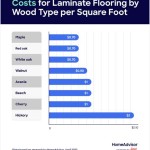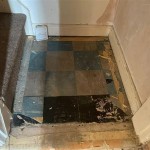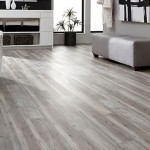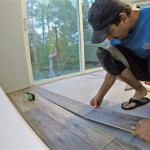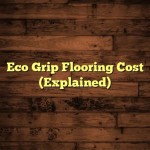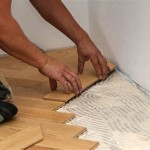What Kind of Flooring Looks Like Wood?
The demand for wood-look flooring has risen significantly in recent years, driven by its aesthetic appeal and versatility. Homeowners and designers alike seek the warmth and character of natural wood without the associated high costs, maintenance requirements, and environmental concerns. As a result, various flooring options have emerged that convincingly mimic the appearance of hardwood, each with its own set of advantages and disadvantages. Understanding the nuances of these alternatives is crucial for making informed decisions about flooring choices.
This article will explore the prominent types of flooring that effectively replicate the look of wood, detailing their compositions, performance characteristics, installation methods, and cost considerations. By examining these factors, readers can gain a comprehensive understanding of which wood-look flooring option best suits their specific needs and preferences.
Luxury Vinyl Plank (LVP) and Luxury Vinyl Tile (LVT)
Luxury Vinyl Plank (LVP) and Luxury Vinyl Tile (LVT) are engineered flooring products designed to closely resemble natural materials, including hardwood. Composed of multiple layers, typically including a wear layer, a printed design layer, a vinyl core, and sometimes a backing layer, LVP and LVT offer a durable and visually appealing alternative to traditional wood flooring.
The wear layer, usually made of a clear, protective coating, is crucial for resisting scratches, stains, and wear and tear. A thicker wear layer generally indicates greater durability and suitability for high-traffic areas. The printed design layer is where the wood-look is achieved. High-resolution images of real wood are printed onto this layer, often incorporating embossed textures to further enhance the realistic appearance. The vinyl core provides stability and water resistance, making LVP and LVT suitable for installation in moisture-prone areas like kitchens and bathrooms.
One of the key advantages of LVP and LVT is their versatility. They are available in a wide range of wood species, colors, and plank or tile sizes, allowing for considerable design flexibility. Installation methods vary, including click-lock systems, glue-down options, and loose-lay formats. Click-lock systems are particularly popular for DIY installations due to their ease of use. Furthermore, LVP and LVT are relatively easy to maintain, requiring only routine sweeping and occasional mopping.
While LVP and LVT offer excellent water resistance, they are not entirely waterproof. Prolonged exposure to standing water can potentially damage the subfloor. In terms of cost, LVP and LVT are generally more affordable than hardwood flooring, but prices can vary depending on the quality, thickness, and features of the product.
Laminate Flooring
Laminate flooring, another popular wood-look option, consists of multiple layers bonded together under high pressure. These layers typically include a backing layer, a core board (usually made of high-density fiberboard or HDF), a decorative layer, and a wear layer. The backing layer provides stability and moisture resistance, while the core board provides structural integrity. The decorative layer, similar to LVP and LVT, features a high-resolution image of wood, often with embossed textures to simulate the feel of real wood.
The wear layer, typically made of aluminum oxide, is crucial for protecting the decorative layer from scratches, scuffs, and fading. The thickness and quality of the wear layer determine the durability of the laminate flooring. Laminate flooring is graded according to its Abrasion Class (AC) rating, which indicates its resistance to wear and tear. Higher AC ratings are suitable for commercial applications and high-traffic residential areas.
Laminate flooring offers several advantages, including its affordability, ease of installation, and resistance to stains and fading. Click-lock installation systems are commonly used, making it a popular choice for DIY projects. However, laminate flooring is not as water-resistant as LVP and LVT. While some laminate products are designed to be water-resistant, they are generally not recommended for areas with high moisture exposure, such as bathrooms and laundry rooms. Excessive moisture can cause the core board to swell and warp, leading to irreversible damage.
The cost of laminate flooring is generally lower than that of LVP and LVT, making it an attractive option for budget-conscious homeowners. Maintenance is relatively simple, requiring regular sweeping and occasional damp mopping with a pH-neutral cleaner. It is important to avoid using excessive water when cleaning laminate flooring.
One consideration for laminate flooring is that it can sometimes sound hollow underfoot compared to solid hardwood. This can be mitigated by installing a high-quality underlayment, which can also provide additional insulation and sound absorption.
Porcelain and Ceramic Tile
Porcelain and ceramic tile are versatile flooring materials that can be manufactured to mimic the appearance of wood with remarkable realism. Through advanced printing technologies, manufacturers can create tiles with incredibly detailed wood grain patterns, textures, and even knots, replicating the natural beauty of hardwood. These tiles are often referred to as "wood-look tile."
Porcelain tile is denser and less porous than ceramic tile, making it more durable and water-resistant. Both porcelain and ceramic tile are incredibly durable and resistant to scratches, stains, and fading. They are also highly resistant to water damage, making them suitable for installation in bathrooms, kitchens, and other areas with high moisture exposure.
The installation of porcelain and ceramic tile requires specialized tools and skills, typically involving the use of mortar and grout. While DIY installation is possible, it is generally recommended to hire a professional installer to ensure a proper and long-lasting result. Grout lines can be a potential source of maintenance, requiring regular cleaning and sealing to prevent staining and mildew growth.
One significant advantage of wood-look tile is its thermal conductivity. It can be used with underfloor heating systems to provide warmth and comfort underfoot. The cost of porcelain and ceramic tile can vary depending on the quality, size, and design of the tile. Installation costs can also contribute significantly to the overall expense.
While porcelain and ceramic tile offer exceptional durability and water resistance, they can be colder and harder underfoot compared to other flooring options. Area rugs can be used to add warmth and cushioning. One potential drawback of using tile to simulate wood is the inherent rigidity of the material compared to the natural give of real wood. This can sometimes lead to a less authentic feel underfoot.
Engineered Hardwood
Engineered hardwood flooring offers a genuine wood surface with enhanced stability compared to solid hardwood. It consists of a thin layer of real hardwood veneer bonded to a core of plywood or high-density fiberboard (HDF). This construction makes engineered hardwood less susceptible to warping and expansion due to changes in humidity and temperature.
The veneer layer provides the aesthetic appeal of solid hardwood, allowing for a wide range of wood species, colors, and finishes. The thickness of the veneer layer determines the number of times the floor can be sanded and refinished. Thicker veneers allow for more refinishing, extending the lifespan of the floor. Engineered hardwood can be installed over a variety of subfloors, including concrete, plywood, and existing flooring.
Installation methods vary, including nail-down, glue-down, and click-lock systems. Click-lock systems are popular for DIY installations due to their ease of use. Engineered hardwood is more water-resistant than solid hardwood, but it is still susceptible to water damage if exposed to prolonged moisture. It is generally not recommended for areas with high moisture exposure, such as bathrooms and laundry rooms.
The cost of engineered hardwood is generally lower than that of solid hardwood, but it can be more expensive than LVP, LVT, and laminate flooring. Maintenance is similar to that of solid hardwood, requiring regular sweeping and occasional damp mopping with a wood floor cleaner. It is important to avoid using excessive water when cleaning engineered hardwood.
Engineered hardwood provides a genuine wood feel and appearance, offering a balance between cost, durability, and performance. The ability to refinish the floor multiple times adds to its longevity and overall value.
Wood-Look Concrete
Wood-look concrete represents a unique and durable approach to achieving the aesthetic of wood flooring. This is achieved by staining, stamping, or texturing concrete to mimic the appearance of wood planks. Various techniques can be employed to create realistic wood grain patterns, knots, and textures, providing a highly customizable and long-lasting flooring solution.
One of the primary advantages of wood-look concrete is its exceptional durability and resistance to wear and tear. Concrete is naturally strong and resistant to scratches, stains, and moisture. It is also highly versatile, allowing for a wide range of design possibilities. Wood-look concrete can be stained in various colors to replicate different wood species, and it can be textured to create a realistic wood grain feel.
The installation of wood-look concrete requires specialized skills and equipment. It typically involves pouring concrete, applying a stain or dye, and then stamping or texturing the surface to create the desired wood-look effect. A sealer is then applied to protect the surface and enhance its durability. Due to the specialized nature of the process, professional installation is highly recommended.
While wood-look concrete offers excellent durability and design flexibility, it can be colder and harder underfoot compared to other flooring options. Area rugs can be used to add warmth and cushioning. Concrete is also inherently porous, so proper sealing is essential to prevent staining and moisture penetration. The cost of wood-look concrete can vary depending on the complexity of the design and the specific techniques used.
Wood-look concrete is an excellent choice for those seeking a durable, low-maintenance, and visually striking flooring solution. Its ability to mimic the appearance of wood while offering the benefits of concrete makes it a unique and versatile option.

Best Wood Look Flooring Options America

Types Of Tiles That Look Like Wood Tm Tiling Contractor Singapore 1 Direct

The Best Fake Wood Flooring 4 Faux Floor Ideas

What Flooring Looks Like Wood America

The Best Fake Wood Flooring 4 Faux Floor Ideas

Wood Effect Tiles That Look Like

6 Porcelain Tiles That Look Just Like Hardwood Floor Planks
Luxury Vinyl Plank Floors That Look Like Wood

Vinyl Flooring That Looks Like Wood Lx Hausys

Best Wood Look Flooring Options America
Related Posts



